THE LIFE AND LOVE OF LIMPETS
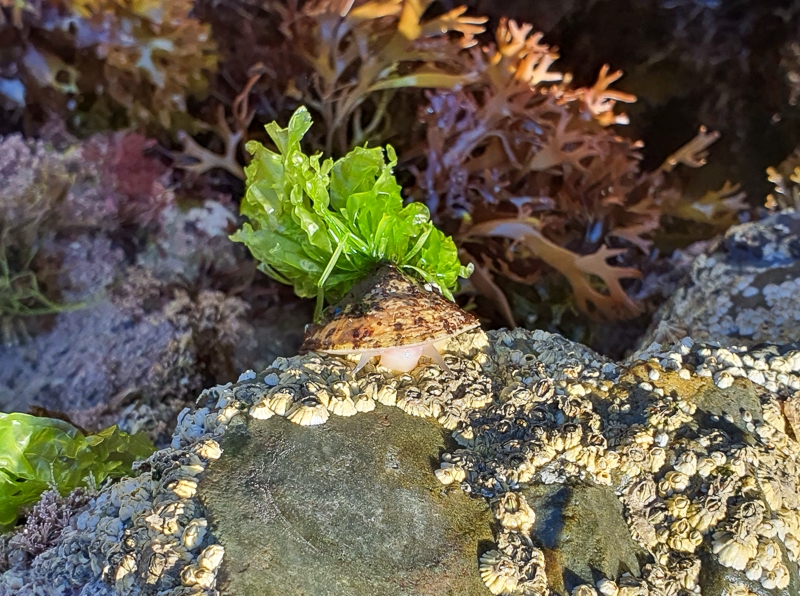
A limpet with a fetching sea lettuce hat
Limpets must be among the most common rockpool creatures on our shores. They’re those wide, cone shaped shells stuck fast to the rocks; the ones that cut your feet when you’re scrambling to catch a crab.
Limpets are the easiest creature to spot if you’re new to rock pooling. If you’ve been rock pooling a lot (or even once), you might be tempted to overlook these drab, still beings.
You might have wondered at their strength as the points of their shells dig into your beach shoes, or as you tried in vain to prise one from their rocky home, but have you ever wondered what secrets the limpet keeps?
I’m writing this post from Bembridge beach on the Isle of Wight. This holiday, I’ve been reading Rock Pool by Heather Buttivant. This wonderful book takes a closer look at 24 sea and shore creatures that you can (mostly) see without getting your feet wet, and certainly without a snorkel.
Every creature’s profile is fascinating, but the limpet captured my attention due to sheer numbers. There are hundreds – thousands – of these creatures on most British beaches and despite a lifelong interest in rock pools, I knew very little about them, other than that they make good crab bait.
I have five really cool things to tell you about limpets.
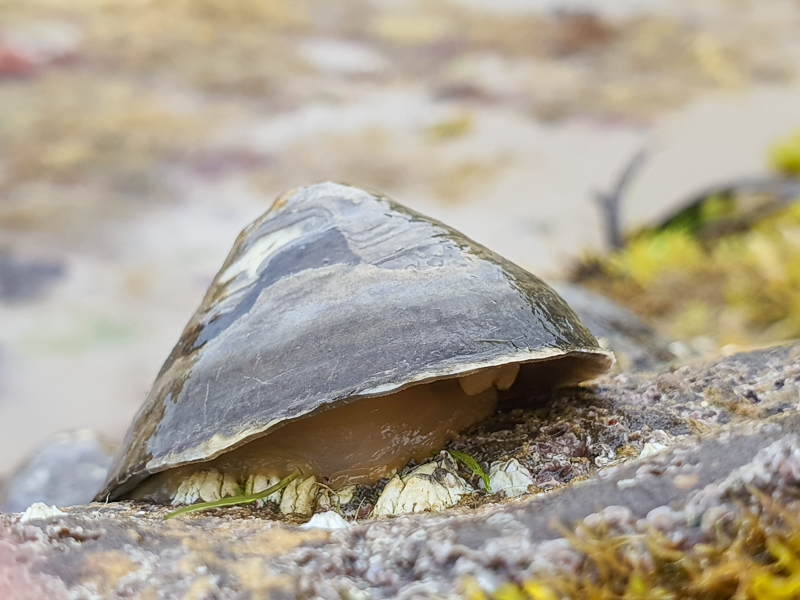
A limpet on the move
SUPER TEETH
"What do limpets even eat?" I hear you ask.
Limpets feed by scraping off the top layer of a rock, hoovering up the microalgae and anything else it can get its teeth on.
To scrape the substrata of the rock, limpets must have teeth. Before we’re done marvelling at a snail with teeth, consider that these tiny teeth must be harder than the rock itself, otherwise the poor limpet wouldn’t last long.
What’s harder than rock? Limpets don’t have diamond teeth, but they do have teeth made of goethite, the hardest biological substance we know of. Limpets are pretty tough, for a snail.
SUPER SUCKER
If you haven’t already, try getting a limpet off a rock with your bare hands. Yep, those little shells that look like they could just be plucked off their spot.
Not as easy as it looks. Limpets are incredibly good at creating a tight seal between themselves and the rock. Unless you catch one on the move – when they raise their shell a bit – you won’t be able to slide even your nail under the side of the shell.
Incredibly, this is because the limpets have a home.
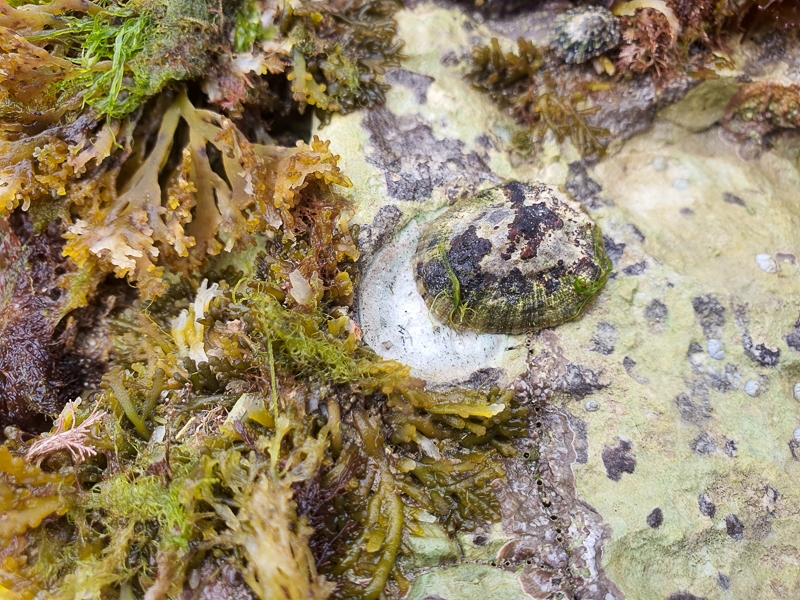
A limpet on its way home
When feeding, limpets meander around, scraping different rocks and hitting all the good microalgae bars in town.
As conditions change, they return to their groove in the rock. Each limpet twists its shell tightly onto the rock many times to make a depression the exact shape of their shell – this is why it’s so hard to prise them off. I imagine it’s a bit like when you erect a camping chair on the sand then wriggle around a bit to sink the legs to a more secure place. This protects them from predators like fish and birds as well as it protects us from spilling our beer or Fanta Lemon.
After their dinner, they make their way back to their individual home groove. If you look carefully, you’ll see empty homes where limpets are out for food (or have moved on) and you might even see limpets returning home.
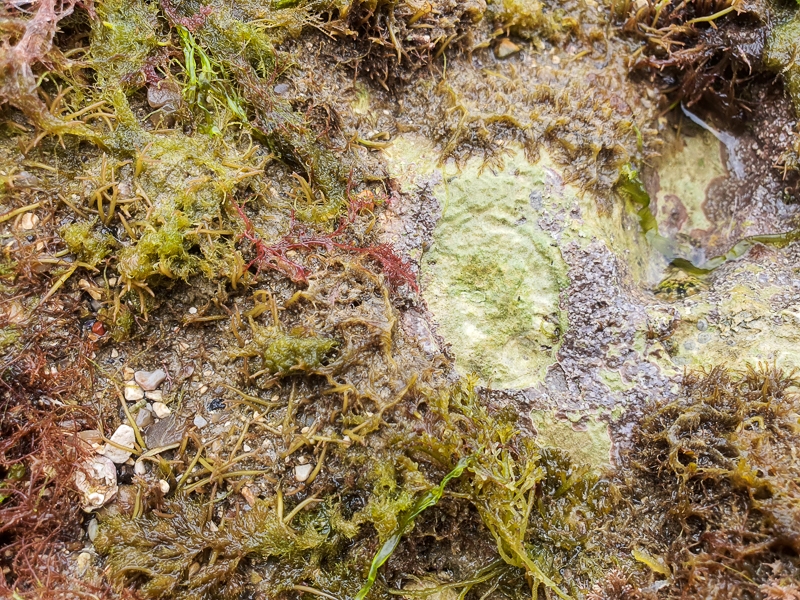
An empty limpet home groove
HANSEL AND GRETEL
How do they find their way back to their own rock scar?
They leave a trail of breadcrumbs of course! Actually, it’s more like Pan in the labyrinth but instead of string, limpets leave a line of mucus behind them when they’re feeding.
This mucus is specific to them, so they follow their own mucus home. They don’t let all this mucus-making go to waste on navigational issues either – the chemical makeup of the mucus is such that it makes the surface extra sticky for the limpet’s favourite types of microalgae, increasing the likelihood of snacking opportunities on their next trip out.
HANDS-OFF REPRODUCTION
Limpets take hands-off parenting to a whole new level – and not just because they don’t have any hands.
Limpets don’t come together to mate, and nor do they have anything to do with the fertilisation or growth of the young.
At a coordinated moment (nobody quite knows how limpets sense the time is right), male limpets release sperm into the sea and female limpets release eggs. And that’s it, their job is complete!
The only thing more surprising than this lassiez-faire way of creating the next generation is that it works. Somehow, the eggs and the sperm find each other in the big wide ocean and join to make baby limpets (called spat) which float around in the plankton for a while before settling on a rock and growing a shell.
All young limpets are male, and when they’ve had enough of that (after two or three years), they turn into female limpets, ready to release their newly grown eggs into the sea when the time comes. This means that the biggest limpets you see on the shore are probably females.
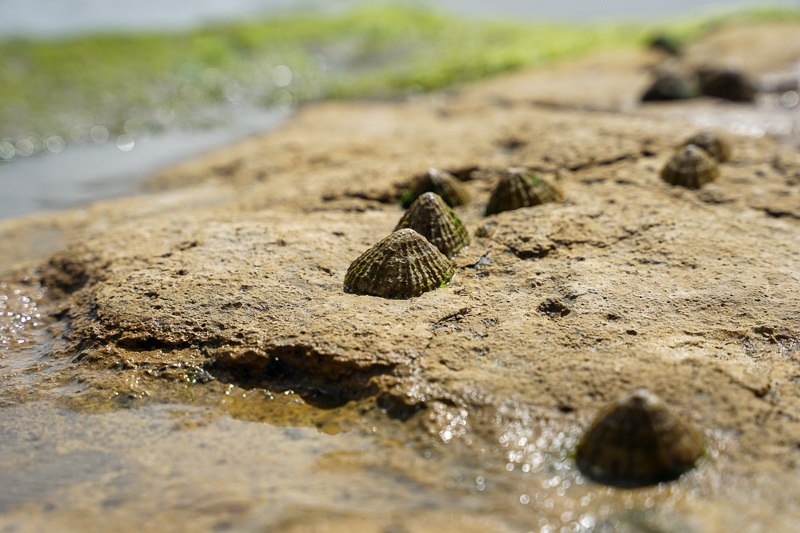
Small limpets are usually male
DON'T PICK A FIGHT WITH A LIMPET
Limpets get eaten by starfish (amongst other things), and unsurprisingly the limpets aren’t best pleased when they feel a starfish on their shell.
You’d be forgiven for thinking the limpet takes the attack lying down – hunkering into its shallow rocky bunker and hoping for the best. It is a snail, after all.
These feisty little creatures do no such thing – their attacks have been caught on camera. They raise their shell from the rock, wait for the unsuspecting starfish’s arm to venture beneath, and then slam their shell back into their rock scar, twisting for good measure, damaging the starfish’s arm and making it think twice about its dinner choice.
Right, I've got something to confess. I left the COOLEST thing about limpets out of this article. The coolest thing is that you can HEAR limpets. Don't believe me? I wrote about my experience listening to limpets here.
Share with your friends
Subscribe to learn more
Join me in exploring our natural world and cultural heritage as we learn how to protect and restore it. Get notified on my latest posts and a monthly newsletter on wider conversation topics for us to chat about.
Recent Posts
If you enjoyed this one, then you might like these too.